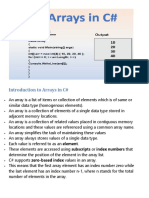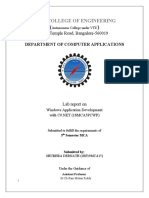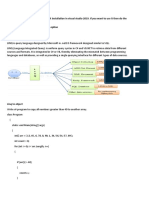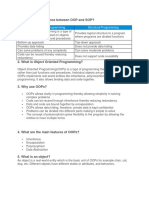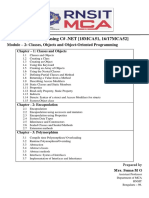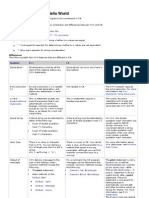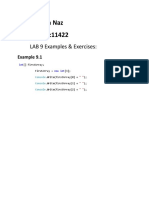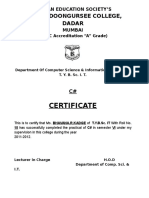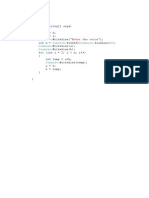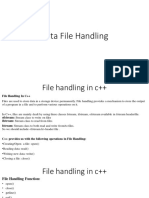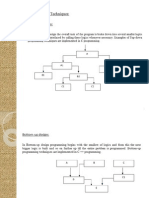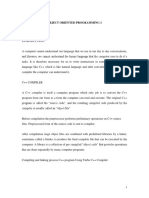0% found this document useful (0 votes)
264 views50 pagesC#.Net Lab Record Programs
The document contains 9 code examples demonstrating different C# programming concepts like checking if a number is a palindrome, prime number checking, command line arguments, finding the largest element in an array, matrix multiplication, summing a jagged array, string manipulation, different types of constructors, and inheritance. Each code example is preceded by its aim and followed by sample output.
Uploaded by
akshay sasiCopyright
© © All Rights Reserved
We take content rights seriously. If you suspect this is your content, claim it here.
Available Formats
Download as PDF, TXT or read online on Scribd
0% found this document useful (0 votes)
264 views50 pagesC#.Net Lab Record Programs
The document contains 9 code examples demonstrating different C# programming concepts like checking if a number is a palindrome, prime number checking, command line arguments, finding the largest element in an array, matrix multiplication, summing a jagged array, string manipulation, different types of constructors, and inheritance. Each code example is preceded by its aim and followed by sample output.
Uploaded by
akshay sasiCopyright
© © All Rights Reserved
We take content rights seriously. If you suspect this is your content, claim it here.
Available Formats
Download as PDF, TXT or read online on Scribd
/ 50




